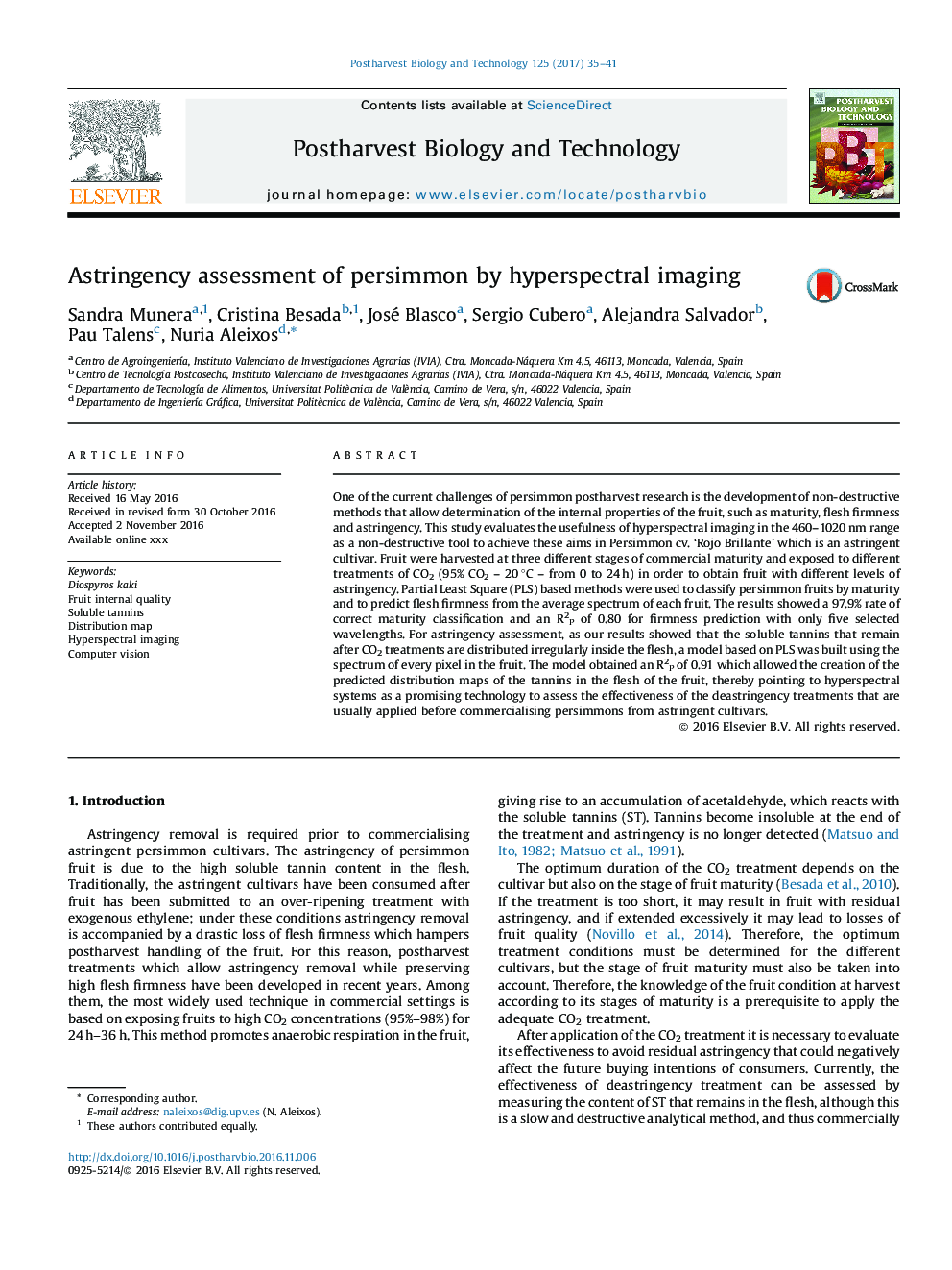| Article ID | Journal | Published Year | Pages | File Type |
|---|---|---|---|---|
| 4517646 | Postharvest Biology and Technology | 2017 | 7 Pages |
•Persimmon internal quality can be assessed by hyperspectral imaging and chemometrics.•High accuracy of maturity classification with band selection.•Creation of astringency prediction distribution maps.•Promising technique to assess astringency of persimmons.
One of the current challenges of persimmon postharvest research is the development of non-destructive methods that allow determination of the internal properties of the fruit, such as maturity, flesh firmness and astringency. This study evaluates the usefulness of hyperspectral imaging in the 460–1020 nm range as a non-destructive tool to achieve these aims in Persimmon cv. ‘Rojo Brillante’ which is an astringent cultivar. Fruit were harvested at three different stages of commercial maturity and exposed to different treatments of CO2 (95% CO2 – 20 °C – from 0 to 24 h) in order to obtain fruit with different levels of astringency. Partial Least Square (PLS) based methods were used to classify persimmon fruits by maturity and to predict flesh firmness from the average spectrum of each fruit. The results showed a 97.9% rate of correct maturity classification and an R2P of 0.80 for firmness prediction with only five selected wavelengths. For astringency assessment, as our results showed that the soluble tannins that remain after CO2 treatments are distributed irregularly inside the flesh, a model based on PLS was built using the spectrum of every pixel in the fruit. The model obtained an R2P of 0.91 which allowed the creation of the predicted distribution maps of the tannins in the flesh of the fruit, thereby pointing to hyperspectral systems as a promising technology to assess the effectiveness of the deastringency treatments that are usually applied before commercialising persimmons from astringent cultivars.
